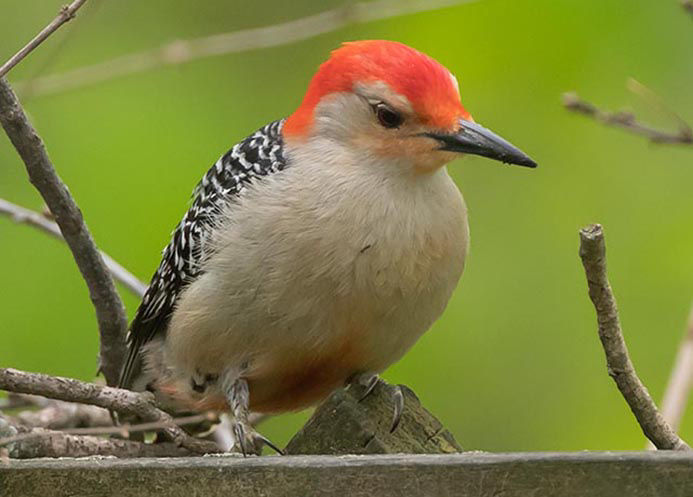Woodpeckers in Florida Populace: Species Review and Conservation
Woodpeckers in Florida Populace: Species Review and Conservation
Blog Article
Discover the Interesting Globe of Woodpeckers: Everything You Required to Know
The globe of woodpeckers is a realm loaded with distinct behaviors, complex adaptations, and a varied variety of species. From their environments and distribution patterns to their feeding habits and specialized physiological features, woodpeckers have actually long captivated the passion of ornithologists and nature lovers alike. Understanding the ins and outs of these fascinating birds gives a glimpse right into the complicated interplay in between their biology and the atmosphere. As we discover the world of woodpeckers better, we discover a wealth of details that sheds light on their relevance in ecological communities and the obstacles they deal with in an ever-changing globe.
Woodpecker Habitats and Circulation
In North America, for example, woodpeckers can be found in both coniferous and deciduous woodlands, utilizing their solid beaks to forage for insects and create nesting cavities in trees. In Africa, particular woodpecker types have adjusted to dry atmospheres, such as the acacia woodlands, where they play an essential function in controlling insect populaces.

Feeding Behaviors and Diet Regimen
Woodpeckers utilize their strong beaks to drill right into the bark of trees, probing for insects and larvae concealed under the surface area. In addition to bugs, woodpeckers also eat nuts, seeds, fruits, and sap.
Woodpeckers are known for their drumming actions, which offers not only to communicate with other woodpeckers but also to find food. The rapid drumming audio is created by the bird pecking on powerful surfaces like dead trees or steel poles. This habits can attract insects hidden in the timber, enabling the woodpecker to find their existence and feed on them.
Distinct Adjustments for Tree Climbing
In their adept quest of insects hidden within tree bark, woodpeckers have progressed impressive physiological features that equip them with unique adaptations for efficient tree climbing. Woodpeckers have strong neck muscle mass and a distinct skull structure that take in the effect of continuous pecking, enabling them to climb up and down without creating damage to their minds. These adaptations showcase the amazing evolutionary design that makes it possible for woodpeckers to navigate trees with precision and efficiency.
Diverse Woodpecker Species Worldwide
With over 200 various varieties spread out across different habitats worldwide, the family of Picidae incorporates a remarkable variety of woodpeckers. These birds can be located in woodlands, forests, savannas, and even city locations, showcasing their versatility to different environments. From the legendary Northern Flicker in The United States blog here And copyright to the vibrant and elusive Crimson-backed Flameback in Asia, each woodpecker varieties shows special qualities in terms of tuft, habits, and habitat choice.
Woodpeckers vary considerably in dimension, with the small Downy Woodpecker measuring around 6-7 inches in size, while the powerful Lineated Woodpecker can reach up to 17 inches - Woodpeckers in Florida. Their beaks additionally are available in different forms and sizes, mirroring their feeding routines. Some species concentrate on drawing check it out out insects from tree bark, like the Acorn Woodpecker, while others, such as the Black-cheeked Woodpecker, prey on fruits and seeds

Conservation Efforts and Difficulties
Conservation campaigns for woodpecker populaces are critical in reducing the effect of habitat loss and other dangers encountering these varied bird varieties. Woodpeckers encounter numerous obstacles to their survival, largely because of deforestation, urbanization, environment change, and intrusive species. To deal with these issues, preservation initiatives concentrate on safeguarding and recovering woodpecker environments, implementing lasting forestry practices, and raising understanding about the significance of these birds in ecological communities.
One substantial difficulty in woodpecker conservation is the fragmentation of their habitats, leading to separated populaces that are a lot more prone to extinction - Woodpeckers in Florida. Conservationists function to develop wildlife corridors and shielded locations that link these fragmented habitats, permitting woodpeckers to relocate between various locations for feeding, breeding, and sanctuary

Conclusion
In final thought, woodpeckers are interesting birds with special adjustments for tree climbing and feeding actions. They can be located in varied environments worldwide, encountering preservation obstacles as a result of environment loss and human tasks. Recognizing their environments, diet plans, and look at more info habits is vital for preservation initiatives to secure these crucial bird types. Additional study and preservation activities are needed to guarantee the survival of woodpeckers in the wild.
Report this page